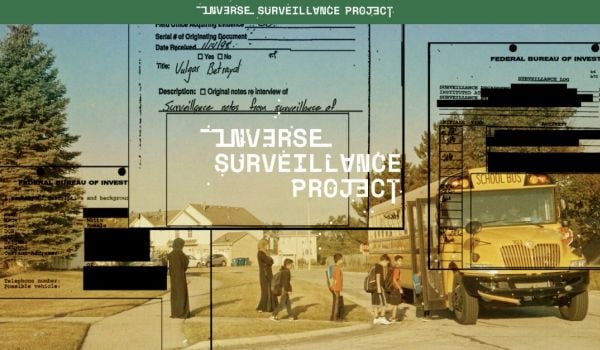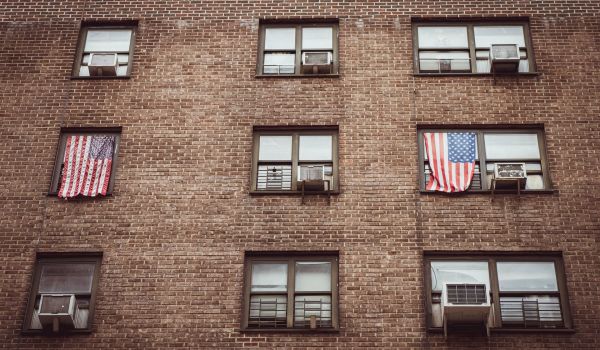Once upon a time, Amisha Patel set up classroom desks and chairs in front of the Chicago Mercantile Exchange. As traders shouted at each other to conduct billions of dollars of transactions inside the building’s famous trading pits, Patel, the executive director of Grassroots Collaborative, and her colleagues held a class outside about corporate welfare.
As they told the class, the exchange’s parent company, CME Group, was taking $15 million in public dollars that would have been spent on Chicago’s public schools, libraries, parks and other public goods, and using it instead to make some bathroom renovations and build an employee fitness center. Later that day, the demonstrators delivered a golden toilet to city hall for Chicago Mayor Rahm Emanuel, to thank him for his part in allocating the $15 million through Chicago’s Tax Increment Financing program, or TIF for short. CME Group ended up refusing the TIF money.
“So we’ve had some good wins,” Patel says. “But the abuse of TIF money has been escalating.”
Found in many cities as a tool meant for revitalizing disinvested neighborhoods, TIF programs take a portion of property taxes from a specific geographic area and use them to subsidize projects within that area. But Grassroots Collaborative and allies argue that may of the projects that have gotten TIF subsidies over the years in Chicago have benefited mostly white, wealthy neighborhoods, not the underserved communities TIF is meant to help. As a coalition of 11 organizations across Illinois, Grassroots Collaborative has been organizing for more than a decade around what they view as Chicago’s abuse of TIF. Last year’s $1.3 billion TIF approval for the Lincoln Yards project, located in a wealthy neighborhood near downtown, was the final straw. In April 2019, Grassroots Collaborative joined as co-plaintiff on the first lawsuit it’s ever filed, against the city and what they allege as its misuse of TIF.
“Instead of reducing blight and creating more development and prosperity in low-income communities, TIF has largely served to aggravate inequities in the city, concentrating benefits to already gentrifying communities and already wealthy areas of the city,” Patel says. “We’re tired of this.”
Chicago’s TIF system is unique in several important ways. One is its scale — Chicago currently has around 150 TIF districts, as many as the next nine largest U.S. cities combined, according to a 2018 study of TIFs by the Lincoln Institute of Land Policy. Nearly a third of annual property tax revenues in Chicago are diverted into TIF district coffers instead of the city’s general funds, according to Illinois Policy.
Unique to Illinois, TIF districts can be created without prior allocation to specific projects, meaning billions of dollars can sit and have sat in separate TIF district accounts waiting years for a project to request them. Meanwhile, the city’s general operating budget has been chronically short on cash.
And then there’s the historic opacity of Chicago’s TIF program. Each TIF district in Illinois lasts for 23 years, with an option to renew for another 12 years. There are public hearings and opportunities to comment on TIF creation and renewal, but ultimate power over TIFs in Chicago — creating them, renewing or closing them, and what to do with their funds — has resided in the Mayor’s office.
Thanks to advocacy over the years from Grassroots Collaborative and others in Chicago, Mayor Emanuel sought to make reforms to the TIF system almost immediately upon coming into office in 2011. He put together a TIF reform commission that year, and adopted many of the recommendations from the commission’s final report, such as bringing unused TIF dollars back into the city’s general budget each year and introducing more transparency into the program. Since 2011, more than 70 percent of TIF dollars in Chicago have gone to public projects including schools, infrastructure, transit and parks.
But still, Emanuel’s administration couldn’t resist the temptation to use TIF dollars as a slush fund for mayoral pet projects. Not to mention the CME Group saga, which took place in 2013, after Emanuel had started reforming the TIF program.
TIF became a hot-button issue during Chicago’s 2019 elections, with many council and mayoral candidates proposing TIF reforms — or abolishing the program altogether. Booting Emanuel out of office to hold him accountable for TIF abuse might have been a major rallying point, but he took that off the table himself. (Newly inaugurated Mayor Lori Lightfoot has said she’d put a moratorium on all new TIF districts “until we have fully analyzed the performance of existing districts to ensure that they are meeting their intended objectives and that private recipients of TIF funds are satisfying their contractual obligations.”)
“The decision to move forward with a lawsuit really was in the context of the moment created when Rahm Emanuel decided not to run for re-election, and the reality he was trying to push forward this final mega-development right before he left office,” Patel says.
The lawsuit could have much broader implications beyond Chicago. The co-plaintiffs, Grassroots Collaborative and Raise Your Hand for Illinois — a statewide coalition of parents who advocate for public education — are alleging that Chicago’s TIF system has subsidized projects benefiting mostly white, mostly high-income neighborhoods that don’t really need public subsidies for development. As a result of TIF dollars being used where they aren’t needed, the co-plaintiffs allege, Chicago Public Schools and other municipal services have been denied revenue over a long period, leading to school closures and neglected public services in other parts of Chicago that are disproportionately low-income, and predominantly black or Latinx.
The argument that property tax incentives take away needed funding from overcrowded schools, outdated libraries, overgrown parks and other poorly funded public services will sound familiar to those in Philadelphia, New York, Baltimore or pretty much anywhere that uses property tax gimmicks to subsidize development.
“I would absolutely hope that this case results in a very close examination of many of these types of subsidy programs where public dollars are being used to subsidize private development,” says Aneel Chablani, Chief Counsel at the Chicago Lawyers’ Committee for Civil Rights, which is serving as lead legal counsel for the plaintiffs on the lawsuit. “What we’re trying to show, in terms of the disparate impact, I would hope would be something that is looked at in other cities because that is not necessarily unique to [Chicago’s version of] TIF.”
“Disparate impact” is a term that has shown up in cases that have reached the U.S. Supreme Court. Back in 2015, in the majority decision under Texas Department of Housing and Community Affairs v. The Inclusive Communities Project, Justice Anthony Kennedy defined disparate impact as a “disproportionately adverse effect on minorities,” even when unintended. In that ruling, the majority determined that disparate impact was a violation of the Fair Housing Act.
Mounting a lawsuit is no small or easy task, particularly one as complex as this one. The Chicago Lawyers’ Committee has three attorneys on the case, plus three more from the nationwide Lawyers’ Committee for Civil Rights Under Law.
“There’s an exceptional amount of factfinding and research, and working with experts who will eventually be testifying in support of the allegations,” Chablani says. “What this case is challenging is how the city has used TIF over time, so that aspect makes it very complex. It’s also complex in terms of what we’re trying to demonstrate in terms of harm from the system. It will require showing how the operation of the system over time has impacted lower-income communities of color, and has resulted in less economic investment in the areas most intended under the TIF statute.”
Anticipated witnesses for the plaintiffs will come from all over the predominantly black and Latinx neighborhoods on the South Side and West Side of Chicago. It will fall on Grassroots Collaborative to do the community organizing that brings out the best voices to testify in court documents or on the witness stand.
“[The witness list] will build on the leaders who have already been invested in this work over the past decade,” Patel says. “They hail from black neighborhoods, Latinx neighborhoods, young people, parents for sure, long-time residents who are seeing the lack of investment or hyper-investment — both of which have harmed longstanding residents of those neighborhoods.”
The lawsuit filing has generated enough buzz already that Patel has started meeting with new potential allies who might ultimately serve as witnesses, or help identify them. New donors have even stepped forward to help fund the case, according to Patel. Chicago Lawyers Committee is covering all legal expenses out of its own funds, leaving Grassroots Collaborative free to focus on the community organizing.
“We have a really strong opportunity to keep organizing and reaching new people through this lawsuit — new communities, new organizations and new individuals who are seeing what’s happening but haven’t necessarily known exactly what they can do about it,” Patel says.
This article is part of The Bottom Line, a series exploring scalable solutions for problems related to affordability, inclusive economic growth and access to capital. Click here to subscribe to our Bottom Line newsletter.

Oscar is Next City's senior economic justice correspondent. He previously served as Next City’s editor from 2018-2019, and was a Next City Equitable Cities Fellow from 2015-2016. Since 2011, Oscar has covered community development finance, community banking, impact investing, economic development, housing and more for media outlets such as Shelterforce, B Magazine, Impact Alpha and Fast Company.
Follow Oscar .(JavaScript must be enabled to view this email address)

















